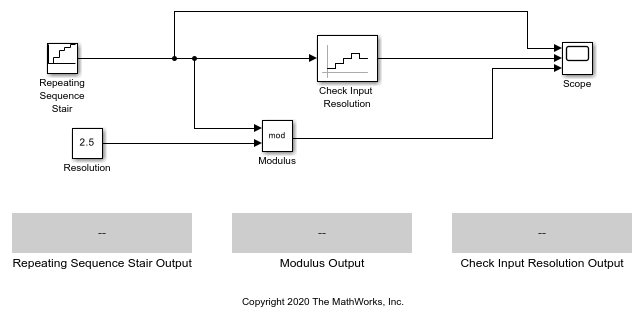Check Input Resolution
Check that input signal has specified resolution
Libraries:
Simulink /
Model Verification
HDL Coder /
Model Verification
Description
The Check Input Resolution block checks whether the input signal has a specified resolution. The block input and resolution can be either a scalar or vector. The input and resolution must be the same data type.
If the Resolution parameter is a scalar, the block calculates the
modulus of the input signal over the provided scalar resolution. The calculated modulus
is then compared to a tolerance of 10e-3, and executes an assertion
after comparison. If the modulus is less than the tolerance, the assertion is
true (1) and the block does nothing. If not, the block halts the
simulation and returns an error message by default. If the
Resolution parameter is a vector, it asserts true
(1) if the value of the input signal is equal to any of the resolution
vector elements.
The block compares the input to the resolution in several additional ways depending on the dimensions of the signal and resolution.
When comparing a scalar input signal or resolution to a vector input signal or resolution, the block compares the scalar to each element of the vector.
When comparing a vector input signal to a vector resolution, the block compares the input signal to the resolution element-by-element.
For models with an input signal and resolution that are both vectors, the input signal and resolution must have the same dimensions.
Examples
Ports
Input
Output
Parameters
Block Characteristics
Data Types |
|
Direct Feedthrough |
|
Multidimensional Signals |
|
Variable-Size Signals |
|
Zero-Crossing Detection |
|
Extended Capabilities
Version History
Introduced before R2006a
